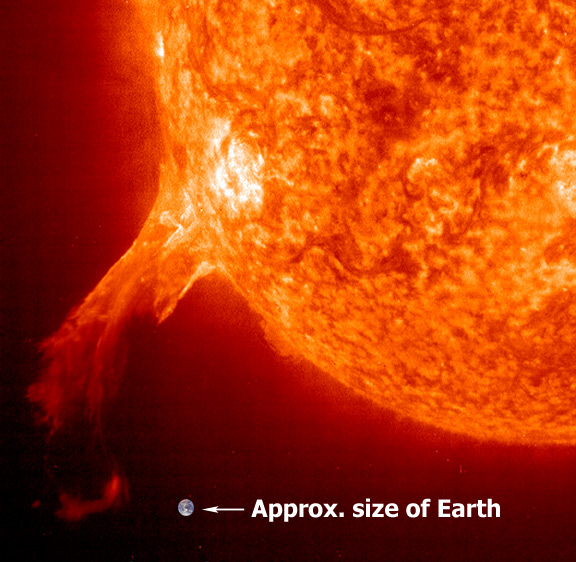
Caution: never look directly at the Sun because it may damage your eyes and even cause blindness.
At the center of our four and a half billion year old solar system is the Sun, a gigantic sphere of gas - two-thirds hydrogen and one-third helium - that is undergoing nuclear fusion. It is expected to shine for a further 5 billion years before running out of fuel and turning into a dim "white dwarf" star.
At the surface of the Sun, the average temperature is an impressive 5,500 degrees. Inside is hotter still. In fact, at the very center of the Sun, the temperature is an unimaginable 16 million degrees.
The Sun is not only hot, but also big! It is over 300,000 times more massive than the Earth, and contains about 99.8% of the solar system's total mass. It is 1,390,000 km across - over 100 times larger in size than the Earth (over one million times larger in volume).
The Sun doesn't just sit there burning away while the planets orbit around it, but it actually spins on its own axis, completing one rotation roughly once every month. However, because it is not a solid body, its surface rotates at different speeds, with the material at the Sun's equator completing each revolution several days faster than the material near its poles.
Without the Sun we very likely would not exist. It is essential for most life on Earth because of the warmth it brings. But the Sun doesn't only shine light, it also blows off a wind of charged particles known as plasma. When this interacts with the Earth's atmosphere, it can result in the Aurora Australis, or "Southern lights". When this solar wind hits a comet, it produces those characteristic "tails" which point away from the Sun. The spacecraft Genesis recently captured some of these particles and scientists are currently studying them to learn more about our star, the Sun.
